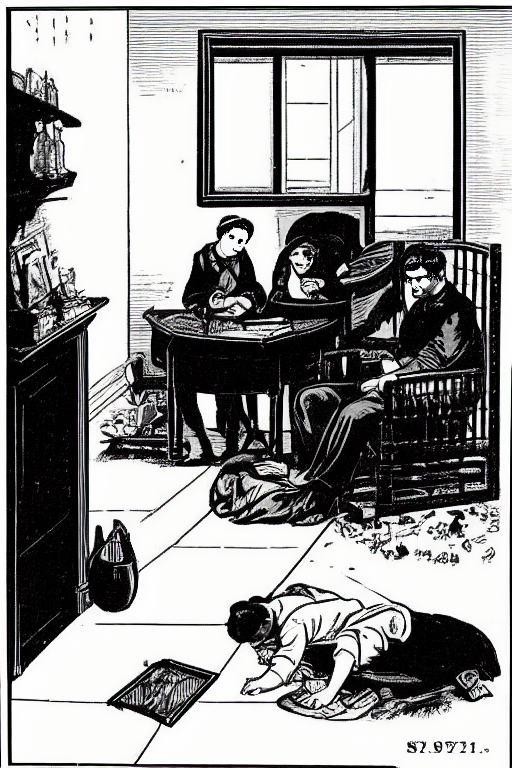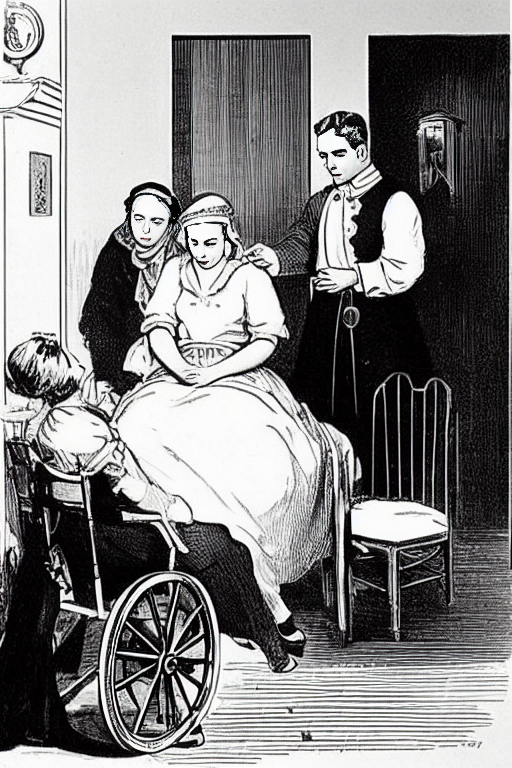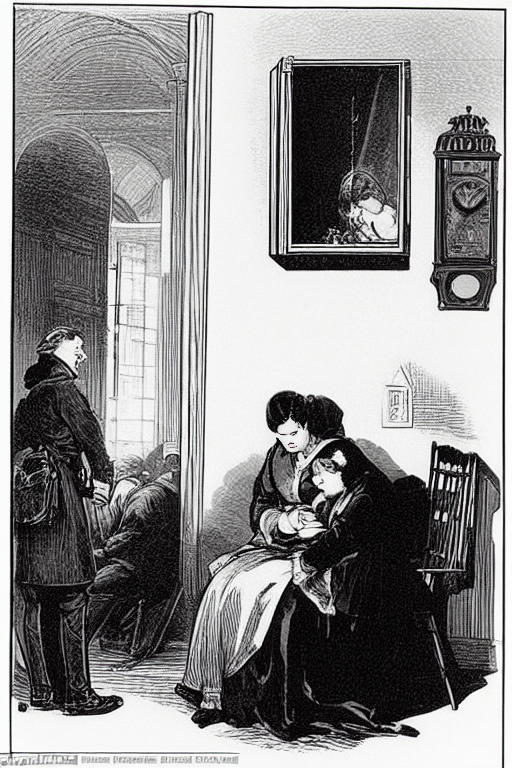On July 6, 1907, the body of Henrietta Oliver was found at her residence in Barmah near Nathalia, Victoria. She had sustained a fatal gunshot wound, and her six-month-old baby was found crying loudly nearby in a pram. A gun, which had recently been discharged, was found lying near her. The circumstances surrounding her death were mysterious, and an inquest was held by Mr. Murphy, R.M., to investigate the incident.
At the inquest, evidence was presented that suggested the gun had accidentally discharged while being handled by Mrs. Oliver. However, there was no direct evidence to show how the shooting occurred, leaving some questions unanswered about the incident. Despite the lack of conclusive evidence, the Coroner concluded that there was nothing to suggest murder, and a verdict of accidental death was returned.
The Gun
Around 1906, double-barrel breech loading guns were already well-established firearms, with a history dating back to the early 19th century. The shotguns were widely used in Australia for a variety of purposes such as hunting, sport shooting, and self-defense. They were particularly popular among farmers and other rural residents who needed a reliable firearm for protection against wild animals or intruders.
Several manufacturers produced double barrel breach loading shotguns during this time period, including British manufacturers such as Parker-Hale, BSA, and Webley & Scott, as well as American manufacturers such as Remington and Winchester. Some Australian gunsmiths and manufacturers also produced double barrel breech loading shotguns, such as F. J. Holdsworth & Co. and W. R. Pape & Co.
The quality of double barrel breech loading shotguns varied depending on the manufacturer and the specific model. Shotguns produced by reputable manufacturers such as Parker-Hale, BSA, and Webley & Scott were generally considered to be of good quality and reliable. However, there were also lower-quality shotguns produced by less well-known manufacturers that were not as reliable and may have had issues with durability and accuracy.
Assuming a farmer purchased a double barrel breech loading shotgun during this time period, they would likely have looked for a reliable and durable firearm that could withstand heavy use in harsh outdoor environments. Many farmers would have preferred shotguns with a larger bore size, such as 12 or 16 gauge, which would have been suitable for hunting and self-defense purposes. Some farmers may also have looked for shotguns with features such as longer barrels for increased accuracy, or interchangeable chokes for versatility in different shooting situations. Overall, double barrel breech loading shotguns were a common and important tool for many Australian farmers and rural residents during the early 1900s
The Barmah Tragedy is a case shrouded in mystery, and one that continues to captivate the public’s imagination. Data science can offer a unique perspective on such cases, by analyzing the available evidence and identifying patterns that might shed light on what really happened. By exploring the data and applying machine learning techniques, we may be able to uncover new insights into this tragic event, and bring closure to those who seek answers.
This case presents a number of intriguing questions, and data science methods could be applied to help piece together what really happened. For example, calculating the trajectory of the bullet could help determine whether or not the shot was fired from a position consistent with Mr. Oliver’s account of events. This could be done by analyzing the angle and trajectory of the wound, combined with measurements of the room, including the positions of furniture and other objects.
Timeline of events
| Date | Time | Event |
|---|---|---|
| Around 1880 (est) | Henrietta Wright was born | |
| 29 Mar, 1906 | Henrietta Oliver and Edward Oliver | |
| Apr, 1906 (est) | Estimated date of conception of Mrs. Oliver’s baby | |
| 21 Jan, 1907 | Birth date of Mrs. Oliver’s baby | |
| July 3, 1907 | Around 9pm | Mrs. Henrietta Oliver was found dead in her house |
| July 4, 1907 | An inquest was held on the next day after the the body was found | |
| July 12, 1907 | Funeral of Mrs. Henrietta Oliver at Barmah cemetery |
Visualizing the layout of the room and the position of the victim at the time of the incident could also help investigators better understand what happened. This could be done by creating a 3D model of the room and using simulations to determine where the gun may have been located.
Property records could also be analyzed to determine if there were any recent changes to the ownership or use of the property. Were there any disputes over the ownership or use of the property that could have led to the shooting? Were there any recent renovations or modifications that could have contributed to the tragedy?
An inquest from the time of the incident was reviewed to uncover any additional information or clues that could help solve the case. Were there any witnesses or individuals who had been in contact with the victim or her husband that could provide additional information? Were there any discrepancies or inconsistencies in the testimony given during the inquest?
The Inquest:
Joseph B Kasys, the constable, arrived at the crime scene and was directed to the kitchen. Upon entering, he found the victim in a seated position on a chair with a gunshot wound that entered at the back of the head and exited through the right cheekbone. The hair around the entry wound was scabbed [I’m assuming with blood but it’s not clear]. The victim’s body was positioned with the feet crossed and the left hand had fallen down, with a newspaper resting between the fingers on the floor, which was covered in blood. The victim’s left eye was black [Not sure if this means bruised black or the eyeball itself was black]. The victim’s right hand was resting on her thigh. A double-barreled gun was leaning against the pram behind the woman’s right side. Additionally, a discharged cartridge was found nearby. A gun with a cartridge was also found on the mantelpiece.
Edward James Oliver was born on 10th January 1882 in Numurkah, Victoria. He was the son of Edward Oliver and Emma Oliver. His father was 40 years old at the time of his birth, and his mother was 28.
Edward eventually got married to Henrietta Wright, and together, they had one daughter. The family lived a peaceful life, but things changed after Henrietta’s death. After 2 years, Edward met and married Emma Rose Anna Pryor. Together, they had seven children. Edward passed away on 23rd January 1955 in Coonabarabran, New South Wales. He was 73 years old at the time of his death.
Visualisation
In an effort to visualise the scene an art prompt was generated using artificial intelligence (AI), taking into account the visual and emotional aspects of the tragic scene captured in the photograph. By utilizing AI, the prompt was able to capture the essence of the image, conveying the mood and style that would be best suited to the subject matter. With its focus on muted tones, somber lighting, and attention to detail, the art prompt invites the viewer to reflect on the fragility of life and the weight of loss. Furthermore, this process demonstrates how AI can be used to generate prompts for artists and designers, providing a new tool for creative exploration and inspiration.
Art Prompt:
a somber image that portrays the tragic scene of a woman’s untimely death. The scene should include the woman sitting in a chair with her six-month-old baby in a perambulator beside her, while a recently discharged gun is visible on the floor nearby. The lighting should be low and muted, The colors used in the image should be subdued, with a focus on shades of gray and black. symbols of tragedy and loss, broken mirror , stopped clock.



You may be curious to know what happened to the baby in the pram, I was able to uncover the following.
Dorothy was born on 21st January 1907 in Barwo, Victoria. Her parents were Edward Oliver and Henrietta Wright. Dorothy was their only child together. Sadly, as we know her mother passed away 6 months after giving birth to her.
In 1932, Dorothy married a man named Albert in Nathalia, Victoria. They started a family together and had four children. Dorothy passed away on 26th March 1976 in Jerilderie, New South Wales, at the age of 69. She was buried there.
Overall, the mysterious death of Henrietta Oliver presents a compelling case that could benefit from further application of data science methods. Through careful analysis of the evidence and data available, it may be possible to uncover new information and piece together how it happened on that fateful night.